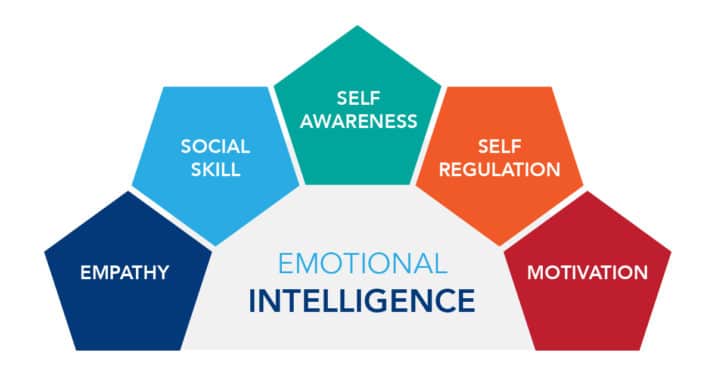The digital market’s nature has prompted businesses to shift their strategy toward digital transformation, which can be challenging for technically adept leaders. Digital technology is the future of business and the key to staying competitive. Unfortunately, businesses that do not prioritize customer experience risk losing clients to competitors that have harnessed the power of digital technologies.
This article provides insight into the nature and goals of digital transformation, the various types of technologies available, and a four-step process to help you prepare for your digital transformation journey.
What is Digital Transformation?
Incorporating digital technology across the entire organization, which has a significant impact on how businesses operate and, ultimately, how much value they deliver to customers. In other words, digital technology affects business processes, culture, and customer experiences.
Digital transformation begins and ends with the customer in mind. It’s a shift in mindset that focuses on using technology to meet customer needs in innovative ways. Specifically, nearly half of all companies reported that the two factors that influenced implementing a digital transformation strategy were customer experience and satisfaction.


Businesses use a digital transformation strategy to get their customers more involved and give themselves an advantage over the competition. That is, newer business models, better customer experiences, and more innovative products and services are possible as emerging technologies evolve. However, a digital transformation strategy requires businesses to rethink their strategic plan to make the most of what technology offers.
Businesses must consider using newer technology to inform their operations since market leaders risk disruption unless they adopt a digital strategy. For example, a third of market leaders fear their businesses won’t survive in the upcoming years. Unfortunately, businesses will struggle if they don’t adapt to the changes in the market that come with digitalization.
In fact, IKEA is an excellent example of a company that has successfully incorporated digital transformation. Customers can visit the IKEA website and use virtual reality applications to view how specific things would look in their homes. To remain competitive, IKEA employs artificial intelligence and machine learning to modify its supply chain to consumer demands and market trends. Consequently, IKEA has integrated the latest technology in all business areas to make things easier and more engaging.
The Goals of Digital Transformation
Digital transformation helps businesses better meet the needs of customers, employees, and shareholders. Interestingly, Deloitte reported that businesses with a better digital transformation strategy reported a 45 percent revenue growth. Using computer-based technology helps achieve the following:
Employee Productivity
One of the most critical digital transformation goals is to help employees do their jobs well by offering the best tools. People, technology, and applications can work together to make the workplace more productive. Automation software can free employees from doing routine tasks to focus on the customer. For example, software that tracks project time can look at real-time data and suggest the best solutions, which can be incredibly useful for a productive remote workforce.


Gain Customer Experience Insight to Anticipate and Personalize Products and Services
Understanding what your customers want and anticipate is the best approach to increasing sales, client loyalty, and business growth. Thus, businesses can gain valuable insight into customers’ needs by keeping track of every touchpoint. Customer databases, web, and mobile applications digitally record these touchpoints and create a 360-degree customer view. In particular, this data reveals how, when, and why your customers do business with you, which can help anticipate and personalize products and services.
For instance, a common way to collect customer experience insights is through social media listening – tracking different platforms for conversations related to a specific product or business and assessing them for discoveries or opportunities.
Improve Customer Service
Providing customers with excellent service is an effort that requires various departments. The latest technologies can improve knowledge sharing and cross-collaboration in sales, marketing, and customer service teams. When all teams are working from the same customer data, it reduces conflict that may stem from opposing goals. In this case, companies can enhance cross-collaboration by using communication applications like Slack to promote asynchronous conversations among different departments. As a bonus, Slack also offers team development applications that help improve team morale.
Digital Transformation Technologies
Newer technologies are the drive towards making the digital transformation switch. Specifically, several applications and technologies help the digital transformation process:
Cloud Computing
Using a network of servers connected to the internet to maintain, store, manage, process, analyze, and keep data safe. Specifically, when businesses stores data in the cloud, it better manages administration, streamline processes, boost productivity, cut costs, and ensure data remains safe. Interestingly, using the cloud can help other digital transformation technologies get the power and storage they need without investing in a server.


Machine Learning (ML)
ML helps to speed up business processes automatically and can make intelligent predictions based on large amounts of data. Companies digitize their business processes using ML conclusions to make decisions faster and act on them. In sum, ML is helpful because it can solve problems, find patterns and relationships, and automate routine business processes.
Automation
Automation deploys bots that manage repetitive tasks without the help of a person. When you automate a task, you let a system take care of tasks independently. For example, HR software solutions that automate payroll processing help verify employee information, keep track of timesheets and confirm earnings. Using third-party software solutions can be more cost-effective than hiring full-time staff.
Four Steps to Start Your Digital Transformation Journey
Here are four steps you can take if your business is interested in implementing digital transformation:
Define Your Digital Transformation Strategy
It may be difficult for some companies to know where to begin when so many technological options are available. The first step in beginning your digital transformation journey is to define a long-term strategy that matches your business operations. Namely, you can start by asking yourself three questions to help narrow your focus:


- Where are you now? Inquiring about your current systems and processes can help you discover potential growth avenues.
- Where do you want to be tomorrow? Understanding your end goal will help you better prepare for achieving that goal.
- What are you going to do to get there? By answering this question, you can learn more about the technologies that can help you along the way.
It would help if you had a plan explaining what technologies to use and how to protect your business from digital disruption. Before beginning your digital transformation journey, you need to know your core systems and processes well enough to find potential opportunities for improvement.
Evaluating the Customer Journey
Now is the time for businesses to develop new personalized experiences tailored toward customer needs. Focusing on building authentic relationships with your customers is best to ensure that they feel optimistic about your business. In fact, the return on relationship (ROR) is a valuable key performance indicator for your digital transformation strategy. ROR makes up a relationship’s value, which adds up when nurtured over time. A simple formula to figure out how well your business is at getting new customers or referrals is:
- Calculate the total amount of customers that have done business with you.
- Find out how many of these customers you have helped over the past year.
- Out of the customers you’ve helped, determine which ones were sent to you by other people or returned as repeat customers.
- Divide the number of people you’ve helped in the past year by the total number of referrals or repeat customers.
| Example | |
| Total Customers | 20,000 |
| Total Customers helped (12 months) | 3,000 |
| Referrals and repeat customers (12 months) | 1,200 |
| ROR | 2.5% |
Indeed, keeping track of your business’s ROR helps view your relationship development efforts. A high ROR means customers are more likely to recommend your company to their friends and family. In other words, if your ROR is low, use it as a chance to enhance how your sales, marketing, and customer support teams interact with your customers.
Create an Agile IT Environment
It is essential to have the right technology to back up your digital transformation strategy and quickly and easily adapt to change. Giving your customers a great experience means remaining flexible while anticipating their changing needs. As a result, digital transformation works best with an agile IT environment. An agile framework uses small iterations, which means that your business plan is constantly changing based on customer feedback. This framework can also lead to a positive shift in culture that emphasizes empowerment, open communication, and accountability.
Note, if you would like to read more about how globalization can impact your strategy, check out my blog!
A Multi-Channel Experience


A new wave of customer empowerment has forced businesses to work harder to meet expectations. In today’s digital world, the businesses that can offer immediate, personalized, and easily accessible services to their customers are successful. Therefore, the nature of doing business in the digital world involves multiple channels.
For example, Jenny took a new job as an IT manager and wanted to prepare. She browses Barnes & Noble’s online selection of IT books and finds one she likes. Jenny checks Amazon’s prices and reviews to compare. She clicks on a link in a review by another IT manager that offers a cheaper edition. It’s not until this point that Jenny decides she prefers the recommendation and purchases the book. Thus, creating a single digital profile by combining your customers’ interactions with your business can help with new leads, marketing, and customer loyalty.
Conclusion
Ultimately, pursuing digital transformation is a strategic move that is essential because the nature of business is transitioning to the digital world. The customer is put first during the digital transformation process, and using the most recent technologies can fulfill their changing needs. Fortunately, the same goes for your stakeholders, staff, and culture: all of them benefit from digital transformation. Cloud computing, machine learning, and automation are three of the most powerful technologies that will lead to improved consumer experiences. If you follow the four steps in the process, you will lay an ideal foundation for effectively implementing your digital transformation plan.
Bianca Cardenas, M.S., Ph.D., is a Fellow in Executive Assessment and Consulting with Leadership Worth Following. Dr. Bianca Cardenas empowers leaders to transcend competition by helping them unlock their people's potential.






















